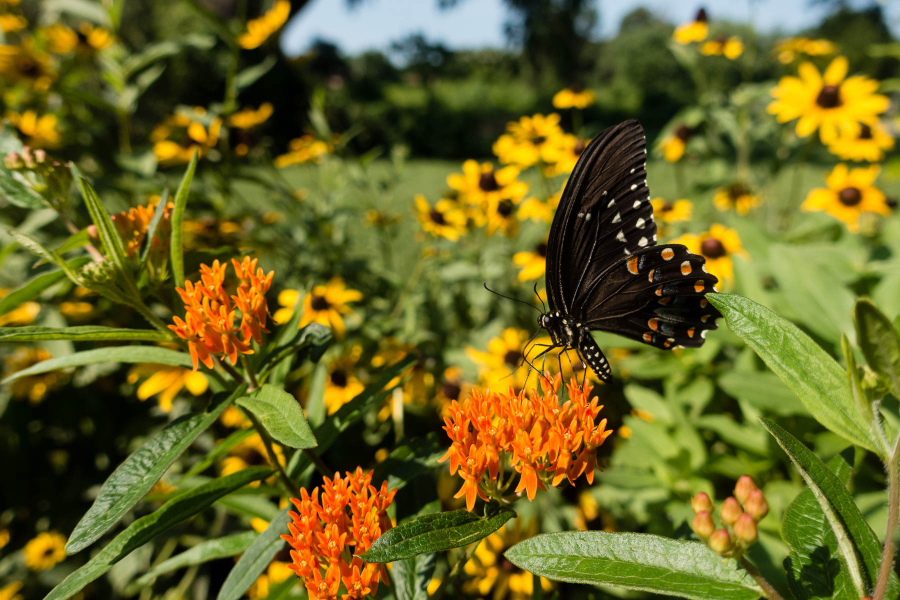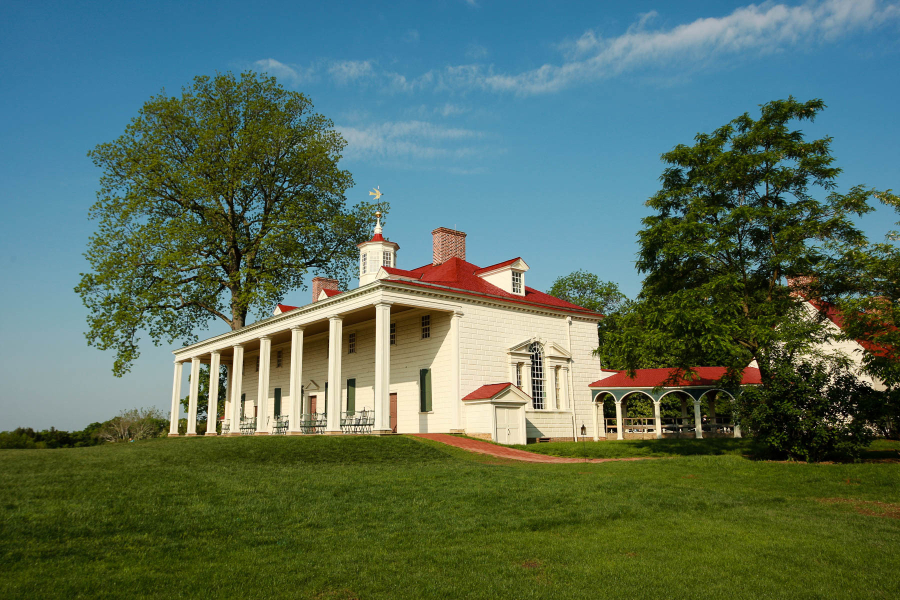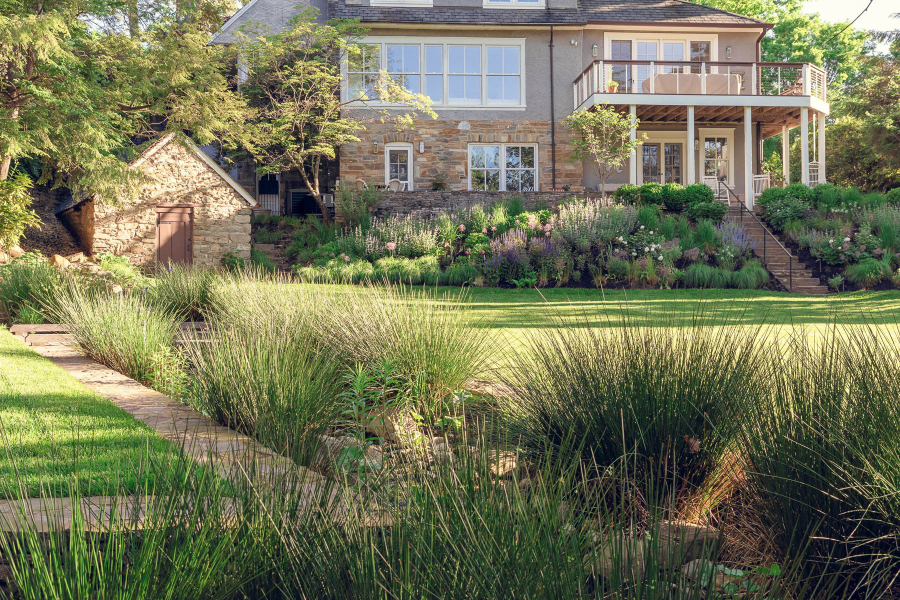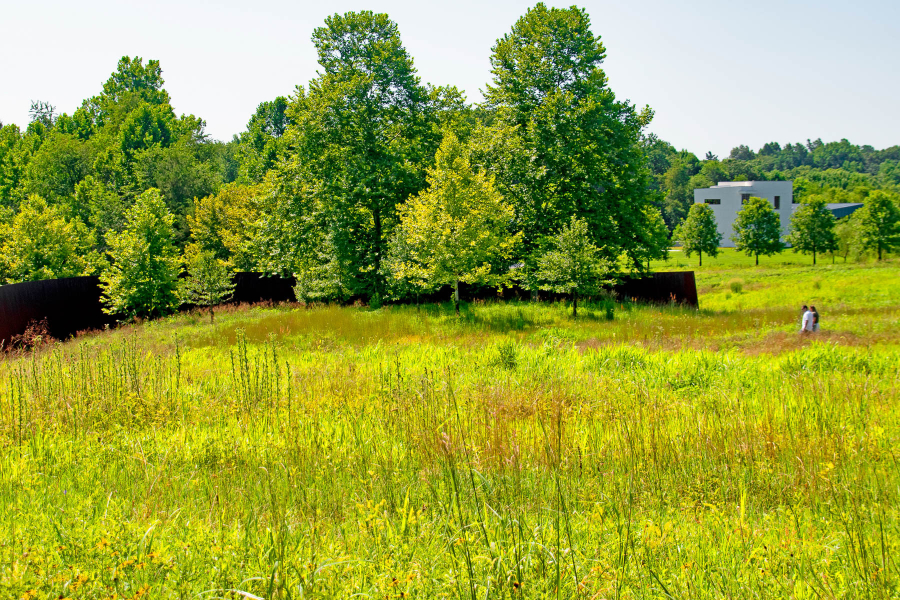Looking for a new gardening project that’s good for the Bay? Try ‘rewilding’
Naturalistic gardens require less maintenance and have more environmental benefits

When it comes to protecting the Bay and its wildlife, it helps to think about the outdoor spaces you have control over. For many of us, that’s our yard.
No matter the size or location—be it a decently-sized patch of grass in a city or a waterfront property along a river—the landscape outside our homes has the potential to improve water quality, provide habitat for wildlife and even help combat climate change.
Unfortunately, most people's yards don’t offer these benefits because they’re dominated by a single type of vegetation: the lawn.
“A lawn is kind of a neutral space. It’s not harming anything but it’s definitely not helping either,” said Jordan Gochenaur, green infrastructure projects manager at the Alliance for the Chesapeake Bay.
For decades, the manicured front lawn has been synonymous with a prosperous, happy home. Americans have so much turf grass that it’s become the number one most irrigated crop in the country. But by dedicating so much of our land to a few species of grass, we’ve lost the numerous environmental benefits that other plants provide. In some cases, when property owners over fertilize their yard, the runoff can contribute to the growth of harmful algae blooms in the water, which lead to low-oxygen areas known as dead zones.
But there’s a solution to this problem—one that substitutes turf grass for lush native plants that provide more environmental benefits, but also require less maintenance, attract more wildlife and beautify your home. Environmentalists and landscape professionals such as Gochenaur are helping to popularize this new gardening style, known in some circles as “rewilding.”
However, this means combating decades (if not centuries) of landscaping norms that are embed in our culture.
Blame George Washington for the Bay’s lawn problem

As far back as the Medieval Age in Europe, large, manicured lawns and uniform gardens were in vogue. Most historians claim that this started with owners of castles wanting to have a clear view of their property to avoid sneak attacks from people lurking in the woods. Over time, this landscaping style became a class symbol, and grew in popularity with the classic English garden, which prioritized uniform flower beds over interlocking and layered plants.
This preferred look for private property came over to the American colonies with European settlers. After the Revolutionary War, George Washington himself hired English gardeners to fashion Mount Vernon according to European styles. At the time, Washington’s estate along the Potomac River was surrounded by dense forest, so his trim yard and garden wasn’t much of a threat to the Bay. But today, we have miles of waterfront property mimicking the clean-cut turf look. Those lawns, combined with hardened shorelines, can be detrimental to local water quality.
Centuries later, the status symbol of a well-manicured property persisted. During the suburban boom of the 1950’s, having a low-cut lawn with only a few small flower beds was the look all homeowners strived for. Lawn care maintenance became big business and advertising further influenced what the yards outside our homes, buildings and churches should look like. Yet another influence was the sheer amount of land homeowners had in America. The average sized yard in the United States was much larger than those in other countries, which meant homeowners had to figure out a simple, affordable way to manage it.
“It became one of the ways to tame all that land,” says Thomas Rainer, a landscape architect, teacher and author living in Arlington, Virginia. “It’s become the default.”
But today, we’ve hit an inflection point. As the world’s environmental challenges continue to mount, the “default” lawn simply isn’t good enough. There is a growing movement to use our yards to create positive impacts on the environment—and you can be a part of it.
It’s time to “rewild” our yards

Over the past decade, naturalistic landscapes that more accurately mimic the natural world have been growing in popularity. Sometimes referred to as “rewilding” or “conservation landscaping,” the trend is a reflection of people’s concerns over environmental issues, such as carbon emissions, declining bee and bird populations, or degraded waterways.
“I think everyone is just thinking a lot more about the climate and sustainability,” said Kevin Gaughan, owner of FORM Garden Design in Baltimore, Maryland, a firm that specializes in naturalistic landscape design.
According to Gaughan, naturalistic garden design is about integrating more native plants, having a greater diversity of species and filling in the spaces between plants instead of keeping them separate. FORM Garden Design focuses on adding “frameworks” to gardens that provide a sense of structure but also allow for layering of vegetation. “We try creating clean borders and boundaries and then filling those pockets and other spaces with lots of plants.”
At Rainer’s firm, Phyto Design, they implement a similar strategy. The firm uses interlocking, multi-layered plants that work well together and enrich the soil, much like what you would see in the natural world.
“We think about planting not as individual objects but as a system,” said Rainer.

The movement has grown in popularity due to a handful of high-visibility projects such as the High Line in New York City or the Glenstone Museum in Maryland where the property’s lawn has been replaced with wild meadow. According to Rainer, there is a particular interest from urban homeowners who are yearning for a greater connection with the outdoors and want to see gardens that remind them of the natural world.
Beyond the environmental benefits, naturalistic gardens are often preferred by homeowners once they get used to them. The gardens require less maintenance than a lawn because plants only need to be cut back once or twice a year. They often have more flowers which means more pollinators fluttering around. Because this style of gardens uses a mix of plants, you will also see different plants blooming at different times of the year.
“It’s really joyous,” says Rainer. “Even the best Victorian bedding plant doesn’t touch your soul in the same way.”
Waterfront owners are also part of the rewilding movement, which is great for the Bay. Instead of low-cut, chemically fertilized grass that shoots polluted runoff right into the water, property owners are choosing to plant trees, shrubs and plants that soak up this runoff. Instead of hardening their shorelines with a bulkhead, owners are putting in living shorelines with native grasses that help with water quality, support wildlife, and protect against flooding and erosion.
Still room to grow
While gardening and landscaping styles have come a long way since the low-cut lawn of the 1960’s, there’s still a lot of room for improvement. According to the Chesapeake Bay Program’s Stewardship Index, 82% of residents could replace a portion of their lawns with native plants, but only 26% have done so.
The greatest barrier to change is likely time and resources. While there are plenty of helpful videos online, rewilding your yard yourself can be both costly and physically demanding.
There’s also a perception problem. Homeowner associations will often set rules about how high you’re able to let your grass or plants grow and neighbors can sometimes mistake your rewilding project for negligence. According to Gaughan, people can feel uneasy about places that look like they are not cared for or are abandoned. This is part of the reason why his firm uses frameworks for its gardens that provide a sense of structure.
Homeowners feeling daunted by a big garden project can start small. If you have a small flower bed with tulips, roses or daisies, replace them with native plants and expand their growing area. Instead of removing all your turf grass, start with just a small section and then expand it each year.
You will also find financial and professional resources available to help. If you can’t afford a landscape designer, get in contact with a riverkeeper or master gardener organization near you and ask about grants for conservation landscaping—such as Bayscaping, which is a Washington, D.C., program that provides incentives to replace lawn with natives. The Chesapeake Bay Landscape Professional is a terrific network of certified landscapers who can help you partially or fully rewild your yard. In Maryland, the University of Maryland's Bay-Wise program is another great resource.
At the end of the day, property owners aren’t expected to completely stop using non-natives that they love or remove all their lawn. The environmental benefits need to be balanced with individual tastes and needs, so that we can truly enjoy outdoor spaces.
“It’s a hybrid system,” said Rainer. “We’re taking the best of traditional horticulture and mixing it with new forms of thinking.”

Comments
I have been a believer in re-wilding of landscapes since I was a teenager. I live now in suburban Newport News, VA. I don't have a lawn. I have wildflowers and vegetable gardens. I have several pollinator friendly plants including milkweed, monarda, heliotrope. daisies and too many more to mention. My yard is so popular that people turn around in my cul-de-sac to look at my flowers.
Thank you!
Your comment has been received. Before it can be published, the comment will be reviewed by our team to ensure it adheres with our rules of engagement.
Back to recent stories